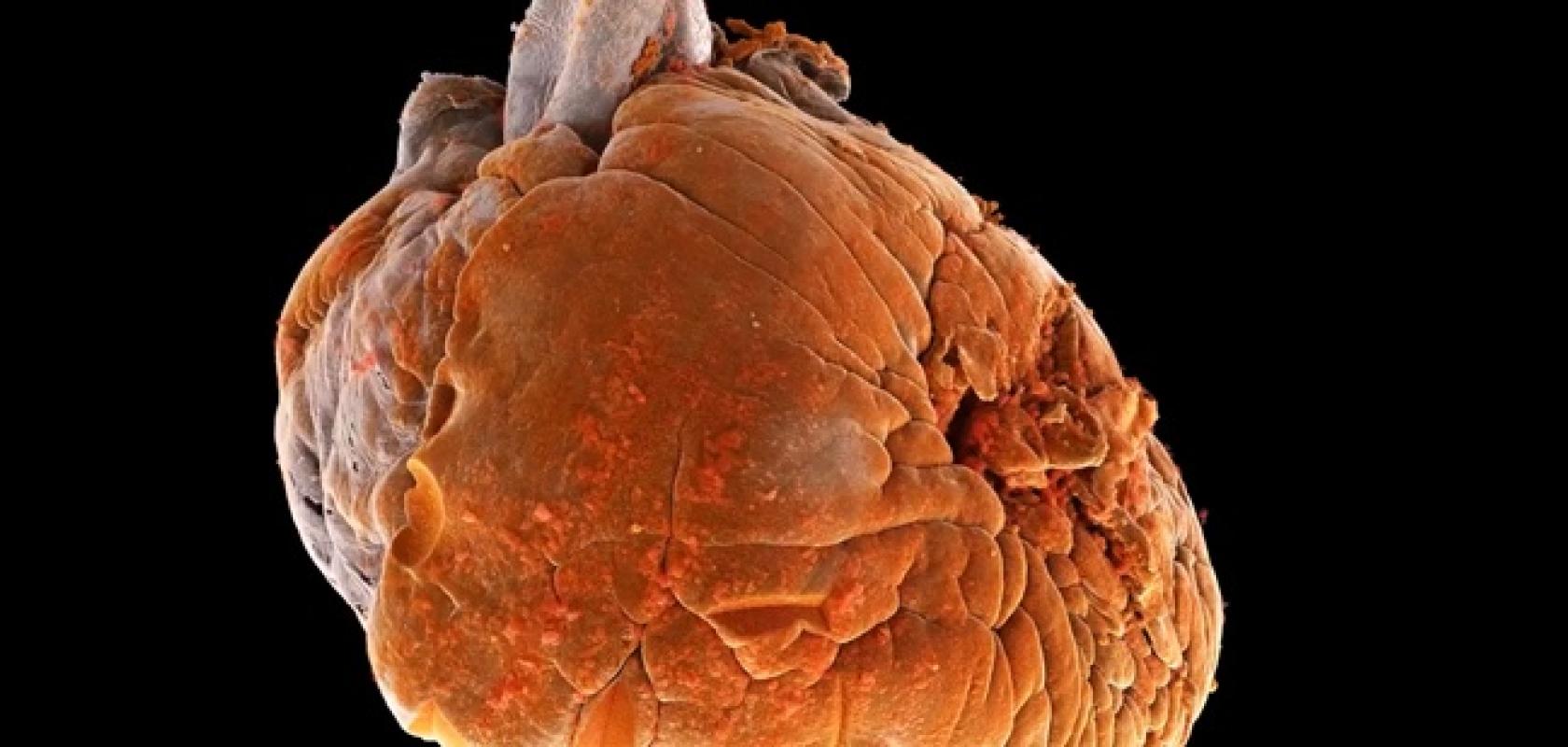Scientists led by the University College London (UCL) and the European Synchrotron (ESRF), known as the ‘world’s brightest synchrotron light source’, have, for the first time, imaged two whole human adult hearts down to the cellular level in 3D.
Captured using an innovative X-ray technique called hierarchical phase-contrast tomography (HiP-CT), the new ‘atlas of the heart’ can potentially lead to medical applications.
CT, MRI, histology have limitations
To study the human heart, researchers typically use clinical imaging techniques such as ultrasound, computed tomography (CT) and magnetic resonance imaging (MRI). While these methods are effective for diagnosing cardiovascular disease, they do not provide detailed structural changes across the different scales within the heart. For higher resolution, histology is required, which involves slicing donor organs into sections. Although this method offers more detailed information, it significantly limits the field of view.
The new synchrotron x-ray imaging technique, called HiP-CT, overcomes these limitations by providing a comprehensive and detailed 3D view of the entire adult human heart. “HiP-CT provides a global view of whole donor organs at unprecedented resolution, bridging the gap between traditional imaging and histology,” said Professor Peter Lee of UCL, HiP-CT project lead.
The team imaged two entire adult hearts, one healthy and one diseased, using the HiP-CT imaging technique on beamline BM18 at the ESRF.
“BM18 is currently the only place in the world where complete human organs can be imaged with such a high level of contrast, and we are still quite far from the limits of the beamline capabilities,” explained Paul Tafforeau, ESRF scientist. “The main limiting factor is the processing of the very large data produced by HiP-CT.”
One of the major advantages of this technique is that it achieves a full 3D view of the organ at a resolution of 20 microns, which is around 20 times better resolution than a clinical CT scanner. In addition, it can then zoom in to cellular level at two-microns (200 times better), achieving histological resolution without cutting the sample. This technique images whole organs hierarchically, revealing details and connections that were previously unknown.
Whilst there have been synchrotron studies on whole foetal and small animal hearts before, these have always been at a tiny scale, one or two centimetres in diameter. In this new research, scientists have successfully imaged adult hearts of 14cm in diameter.
Phase contrast imaging differs from conventional x-ray imaging, which relies on x-ray absorption, by exploiting the refraction of specific types of x-rays passing through tissues, rather than relying solely on x-ray absorption. It results in images with dramatically higher contrast and resolution, particularly beneficial for visualising soft tissues and fine structures, as found in the heart, without the need for staining with a contrast agent.
HiP-CT showed its capacity for high spatial resolution, multi-scale, cardiac imaging ex-vivo, revealing histologic-level detail of the myocardium (muscle cells), valves, coronary arteries and cardiac conduction system (the electrical wiring triggering heart contraction) across length-scales. “The first time you see the heart with HiP-CT, it is quite surprising, as it clearly shows soft tissue not typically visible with conventional X-ray imaging”, said Joseph Brunet, researcher at UCL and ESRF visiting scientist, corresponding author of a study published in Radiology.
Better images of heart could enable new arrhythmia treatments
A significant feat of the study is the detailed imaging of the cardiac conduction system, which generates and transmits the electrical signals that drive the heart muscle’s pumping action.
The virtual sectioning of the conduction system provided scientists with information on fatty infiltration, vascular supply, and pathways between the cardiac nodes and adjacent structures. This level of detail on the entire adult heart conduction system was previously unattainable with existing imaging techniques.
“There is an enormous potential to inspire new treatments using this technique”, explained Professor Perry Elliot, Director of the Institute of Cardiovascular Science, UCL.
An example of this is arrhythmia: “With today’s technology, having an accurate interpretation of the anatomy underlying arrhythmia is very difficult”, added Professor Andrew Cook, heart anatomist at UCL and second author on the paper.
“We believe that our findings will help researchers understand the onset of cardiac rhythm abnormalities and also the efficacy of ablation strategies to cure them”, he said.
In particular, the results have shown that scientists can determine differences in the thickness of tissue and fat layers located between the outer surface of the heart and the protective sac surrounding the heart. This information could be relevant when treating arrhythmia (irregular rhythm).
This work contributes to the Human Organ Atlas project, which aims to establish an open science image database of all human organs in health and disease.
The work also involved collaboration with the Wellcome Sanger Institute, Siemens Healthineers, Great Ormond Street Hospital, Hannover Medical School, the Aachen Medical University, the Helios University Clinic Wuppertal, the University Medical Center of the Johannes Gutenberg-University Mainz, and the Laboratoire d’Anatomie des Alpes Francaises (LADAF).


